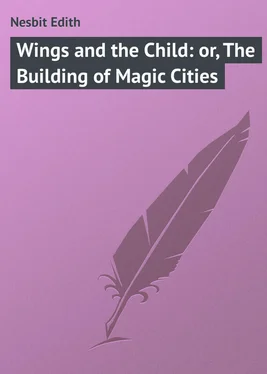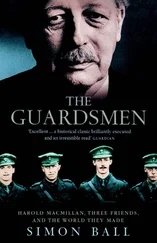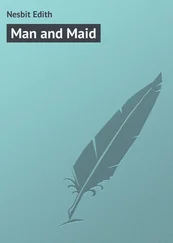Edith Nesbit - Wings and the Child - or, The Building of Magic Cities
Здесь есть возможность читать онлайн «Edith Nesbit - Wings and the Child - or, The Building of Magic Cities» — ознакомительный отрывок электронной книги совершенно бесплатно, а после прочтения отрывка купить полную версию. В некоторых случаях можно слушать аудио, скачать через торрент в формате fb2 и присутствует краткое содержание. Жанр: foreign_prose, на английском языке. Описание произведения, (предисловие) а так же отзывы посетителей доступны на портале библиотеки ЛибКат.
- Название:Wings and the Child: or, The Building of Magic Cities
- Автор:
- Жанр:
- Год:неизвестен
- ISBN:нет данных
- Рейтинг книги:3 / 5. Голосов: 1
-
Избранное:Добавить в избранное
- Отзывы:
-
Ваша оценка:
- 60
- 1
- 2
- 3
- 4
- 5
Wings and the Child: or, The Building of Magic Cities: краткое содержание, описание и аннотация
Предлагаем к чтению аннотацию, описание, краткое содержание или предисловие (зависит от того, что написал сам автор книги «Wings and the Child: or, The Building of Magic Cities»). Если вы не нашли необходимую информацию о книге — напишите в комментариях, мы постараемся отыскать её.
Wings and the Child: or, The Building of Magic Cities — читать онлайн ознакомительный отрывок
Ниже представлен текст книги, разбитый по страницам. Система сохранения места последней прочитанной страницы, позволяет с удобством читать онлайн бесплатно книгу «Wings and the Child: or, The Building of Magic Cities», без необходимости каждый раз заново искать на чём Вы остановились. Поставьте закладку, и сможете в любой момент перейти на страницу, на которой закончили чтение.
Интервал:
Закладка:
And I do not think that this means just that we are growing old, and that the fingers of Time have rubbed the bloom from the fruit of Life. Because those things which must be now as they used to be, trees, leaves, rivers, and the laughter of little children, flowers, the sea at those points where piers are impracticable, and mountains – the ones stony and steep enough to resist the jerry-builder and the funicular railway – still hold all, and more than all, their old magic and delight.
It seems that it is not only that the ugly and unmeaning things have grown, like a filthy fungus, over the sheer beauty of the world, but that the things that people mean to be beautiful are not beautiful, and the things they mean to be interesting lack interest.
And the disease is universal: it attacks new things as well as old. The cinematographs even, newest of the new, as things went in the old world; already the canker has eaten them up. In the first year of Picture Palaces we all crowded to see beautiful pictures of beautiful places: Niagara, the Zambesi Falls, the Grand Cañon. The comic pieces were perhaps French, but they were certainly funny. Also we saw the way the world lived, when it was the other side of the world: "Elephants a-piling teak," naked savages, or as near naked as don't matter, moving in ceremonial dance before the idols that were the gods of their deep dangerous faith. Dramas of love and death and pity and poverty. Quite often in the early days the cinematograph tale was of some workman driven by want to the theft of a loaf. It is true that the story generally ended in his conviction and the adoption of his charming baby girl by the wife of the Juge d'Instruction , but all the same people saw some one poor and sad and tempted, and were sorry and sad for his sake. Also we had tales of Indians with men that rode amain, and horses that one longed to bestride, such beauties they were, all fire and delicate strong temperament. War dramas too there were, where the hero left his sweetheart, and turned coward perhaps, redeeming himself with magnificent completeness in the splendid débâcle of a forlorn hope. That is all over. Already the sordid, heavy hand that smears commercial commonplace on all the bright facets of romance has obscured the vivid possibilities of the cinematograph. We have now for fun the elaborate hurting of one American person by another American person; for scenery, American flat-iron buildings; for romance the incredibly unimportant emotions of fleshy American actresses and actors. There are two girls, good and bad; two men, bad and good. In the end the good man gets the good girl, which is, of course, as it should be, or would be if we could believe in any moral quality in these fat-faced impersonators. You don't care a bit who wins, but none the less, the four of them mouth and mop and mow and make faces at you through five interminable acts, and when the good young man marries the good young woman in a parlour grossly furnished according to American ideals, you feel that both of them are well punished for their unpardonable existence. All real and delicate romance has, we observe, been wiped out by the cinematograph.
It has long been the fashion to sneer at the Crystal Palace, and indeed the poor dear has gone from bad to worse. There are exhibitions there all exactly like all other exhibitions: Switch-backs, Montagnes Russes , Silhouettes, Tumble-scumbles, Weary waves, Threepenny thrills (where you hustle against strangers and shriek at the impact). But once the Crystal Palace was otherwise. In the Victorian days we sneer at, when our fathers could not see that there was any quarrel between knowledge and beauty, both of whom they loved, they built the Crystal Palace as a Temple vowed to these twin Deities of their worship. Think what the Crystal Palace was then. Think what its authors intended it to be. Think what, for a little time, it was. A place of beauty, a place where beauty and knowledge went hand in hand. It is quite true that a Brobdingnagian Conservatory does not seem so beautiful to us as it did to the Prince Consort and Sir Joseph Paxton. It is true that even in the palmiest days of the Crystal Palace you barked your shins over iron girders – painted a light blue, my memory assures me – and that the boards of the flooring were so far apart that you could lose, down the cracks of them, not only your weekly sixpence or your birthday shilling, but even the sudden unexpected cartwheel (do they still call a crown that?) contributed by an uncle almost more than human. It is true that the gravel of the paths in the "grounds" tired your feet and tried your temper, and that the adventure ended in a clinging to bony fingers and admonitions from nurse "not to drag so." But on the other hand…
Think of the imagination, the feeling for romance that went to the furnishing of the old Crystal Palace. There was a lake in the grounds of Penge Park. How would our twentieth century entrepreneurs deal with a lake? We need not pause to invent an answer. We know it would be something new and nasty. How did these despised mid-Victorians deal with it? They set up, amid the rocks and reeds and trees of the island in that lake, life-sized images of the wonders of a dead world. On a great stone crouched a Pterodactyl, his vast wings spread for flight. A mammoth sloth embraced a tree, and I give you my word that when you came on him from behind, you, in your six years, could hardly believe that he was not real, that he would not presently leave the tree and turn his attention to your bloused and belted self. (Little boys wore caps with peaks then, and blouses with embroidered collars.) Convinced, at last, by the cold feel of his flank to your fat little hand, that he was but stone, you kept, none the less, a memory of him that would last your life, and make his name, when you met it in a book, as thrilling as the name of a friend in the list of birthday honours. There was an Ichthyosaurus too, and another chap whose name I forget, but he had a scalloped crest all down his back to the end of his tail. And the Dinosaurus … he had a round hole in his antediluvian stomach: and, with a brother – his own turn to come next, as in honour bound – to give you a leg-up, you could explore the roomy interior of the Dinosaur with feelings hardly to be surpassed by those of bandits in a cave. It is almost impossible to over-estimate the Dinosaurus as an educational influence. On your way back to the Palace itself you passed Water Temples surrounded by pools where water-lilies grew. Afterwards, when you read of tanks and lotuses and India, you knew what to think.
There were Sphinxes – the correct plural was told you by aunts, and you rejected it on the terrace – and, within, more smooth water with marble at the edge and more lilies, and goldfish, palms, and ferns, and humming pervasive music from the organ. There were groves or shrubberies; you entered them a-tremble with a fearful joy. You knew that round the next corner or the next would be black and brown and yellow men; savages, with their huts and their wives and their weapons, their looking-glass-pools and their reed tunics, so near you that it was only a step across a little barrier and you could pretend that you also were a black, a brown, or a yellow person, and not a little English child in a tunic, belt, and peaked cap. You never took the step, but none the less those savages were your foes and your friends, and when you met them in your geography you thrilled to the encounter.
Конец ознакомительного фрагмента.
Текст предоставлен ООО «ЛитРес».
Прочитайте эту книгу целиком, купив полную легальную версию на ЛитРес.
Читать дальшеИнтервал:
Закладка:
Похожие книги на «Wings and the Child: or, The Building of Magic Cities»
Представляем Вашему вниманию похожие книги на «Wings and the Child: or, The Building of Magic Cities» списком для выбора. Мы отобрали схожую по названию и смыслу литературу в надежде предоставить читателям больше вариантов отыскать новые, интересные, ещё непрочитанные произведения.
Обсуждение, отзывы о книге «Wings and the Child: or, The Building of Magic Cities» и просто собственные мнения читателей. Оставьте ваши комментарии, напишите, что Вы думаете о произведении, его смысле или главных героях. Укажите что конкретно понравилось, а что нет, и почему Вы так считаете.












